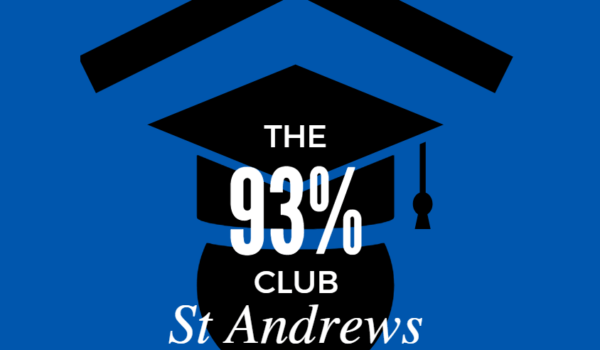December, and a strange one at that. Some people have headed home for the holidays, some haven’t and for some, St Andrews is home. Regardless of the category which you fall into, this holiday season is bound to be a little different. I know that I am one of the lucky ones, able to travel home easily and without worry of quarantining and such. Nevertheless the atmosphere of a childhood home is always slightly oppressive.
Flying over London on my way home I noticed for the first time how absurdly large it is. In London you are never far away from cars roaring down a main road or people shouting about something. It also never gets dark here. In St Andrews, by the time the bell tolls for half five in the evening it’s so dark you can no longer tell the sea from the sky. In London, there’s always that weird purpley-orange city glow. I find myself missing the North Sea; for this reason my artist of the month is Maggi Hambling.
I have loved Maggi Hambling ever since I first discovered her. She just seems so unapologetically herself. She is explicitly ‘lesbionic’ (in her words) and an avid smoker; I was greatly entertained by her appearance in Grayson Perry’s Art Club that aired earlier this year on Channel 4 (I highly recommend for a quarantine binge-watch). She refuses to appear on camera, be it photography or film, without a cigarette in hand. I find her to be a wonderfully strong character and an iconic British artist.
You may have heard of her recently in the news; she was commissioned to create a memorial to Mary Wollstonecraft in Newington Green, London. It was unveiled last month and has since received much controversy from critics. Many critics argue that dedicating a statue of a naked woman to a feminist icon is backwards, only serving to objectify and sexualise the female body. However, Hambling’s response to this is that the woman is meant to be representative of all women, and clothes would only serve to separate her as a woman from a specific time and class. The figure is not a sculpture of Wollstonecraft herself.

The woman is rising out of a ‘swirling mingle of female forms’ – as the BBC described it – and inscribed on the plinth is Wollstonecraft’s famous quotation ‘I do not wish women to have power over men but over themselves’. Generally I think I agree with Hambling in her response to the critics; after all, the sculpture commemorates, but does not depict Mary Wollstonecraft. Regardless of its portrayal, the female body will always be controversial in art if its aim is to celebrate women and not explicitly cater towards ‘the male gaze’. However, arguments could be made that Hambling’s woman fails to be an ‘everywoman’ as she doesn’t represent all body types, women of all ages, etc.
Anyway, the real reason the month of December calls Maggi Hambling into mind is for her paintings of the sea. Although she is known for her expressive and colourful portraits and her works of public sculpture, I feel drawn to the series of paintings inspired by the North Sea. I feel they perfectly capture the spirit of the ocean and also the spirit of December, especially this year.

Hambling’s ‘Walls of Water’ effectively display the sheer impressive power of the North Sea, vast canvases filled with swirling, seething, uncontrolled paint. Just as the winter storms sometimes lift the water and batter it against the pier at high tide (albeit my experience so far of the weather in St Andrews has been fairly tame), Hambling’s paintings are wild and uncaring and so much larger and more powerful that any singular person.
To me, imagining the sand and rocks and fish being unpredictably battered around seems very reminiscent of the current situation regarding the global pandemic. I, for one, am always unsure of when I’ll next be able to see my family or friends, never knowing if plans I’ve made will be uprooted and spat onto the rainy shore as the government once again changes the lockdown regulations in the UK.








Comments